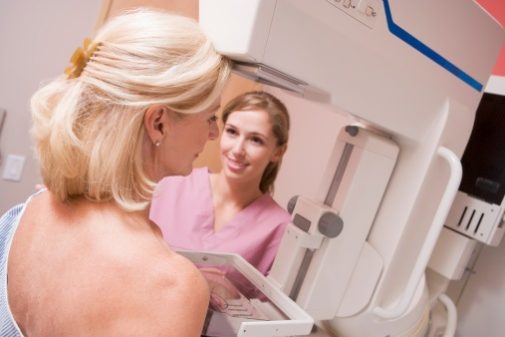False positive results may be detrimental for women’s health

New research out of Advocate’s Russell Institute for Research & Innovation found women who received a false positive result after a screening mammogram were more likely to delay or skip subsequent screenings.
The data was published last week in Cancer Epidemiology, Biomarkers & Prevention, a journal of the American Association for Cancer Research.
“Women who have a false positive result from a screening mammogram often experience emotional, physical, and economic stress,” says Dr. Firas M. Dabbous, manager of patient centered outcomes research at the Russell Institute for Research & Innovation at Advocate Lutheran General Hospital in Park Ridge, Ill. “We wanted to know whether having a false positive screening mammogram also causes women to delay coming back for their next screening.”
Dr. Dabbous says they found that was indeed the case. “This suggests that we need to more actively encourage women who have a false positive result from a screening mammogram to adhere to routine screening mammography recommendations because it has been shown to reduce breast cancer mortality,” he explains.
For the study, Dr. Dabbous and colleagues examined the data of women who received mammography screenings through a large health care organization with multiple facilities in the greater metropolitan Chicago area. As part of their analysis, the team looked at data from 261,767 women, who had a total of 741,150 screening mammograms. The data showed that 12.3 percent of the screenings yielded a false positive result; the remaining 87.7 percent yielded true negative results.
They found that women who had a false positive result were significantly less likely to have a subsequent screening mammogram in the database than women who had a true negative result. In fact, while 22.1 percent of women who had a true negative had at least one subsequent screening mammogram, only 15.0 percent of women who had a false positive had one.
Among the women with more than one screening mammogram in the database, those who had a true negative result from the first mammogram were 36 percent more likely to return for a subsequent screening in the next 36 months compared to those who had a false positive result.
When delay in having a subsequent screen was defined as any mammogram performed more than 12 months after the first screening mammogram, the median delay was found to be significantly higher for women who had a false positive result compared with those who had a true negative result. The median delay was 13 months for those who had a false positive result compared with three months for those who had a true negative result.
The researchers then reanalyzed the data using different statistical methods to eliminate the chance for bias in the methods. They found that women who had a true negative result were 34 percent more likely to return for a subsequent screen than those who had a false positive result and that the median delays in returning for a subsequent screen were six months and 13 months, respectively.
“Because we obtained the same conclusion using two different statistical approaches to analyze the data, we have a high degree of confidence in the results,” says Dr. Dabbous. “We believe that the delay in subsequent screening for women who have an initial false positive result increases the probability that they will subsequently receive a later-stage breast cancer diagnosis compared with women who first have a true negative result from a screening mammogram.”
The researchers found that the four-year cumulative risk of a late stage at diagnosis was 0.4 percent for those who had a false positive screening mammogram compared with 0.3 percent for those who had a true negative result. This difference was statistically significant.
According to Dr. Dabbous, the main limitation of the study was the lack of ability to follow the women who did not show up for their next screening in this health care system because some may have received subsequent mammograms at different institutions. However, he noted that the results were similar when restricted to those who remained in the system, and so the researchers were confident that this limitation did not bias the results.
Related Posts
Comments
About the Author
Sonja Vojcic, health enews contributor, is a marketing manager at Advocate Health Care in Downers Grove, Ill. She has several years of international public relations and marketing experience with a Master’s degree in Communications from DePaul University. In her free time, Sonja enjoys spending time with her family, travelling, and keeping up with the latest health news and fashion trends.

















